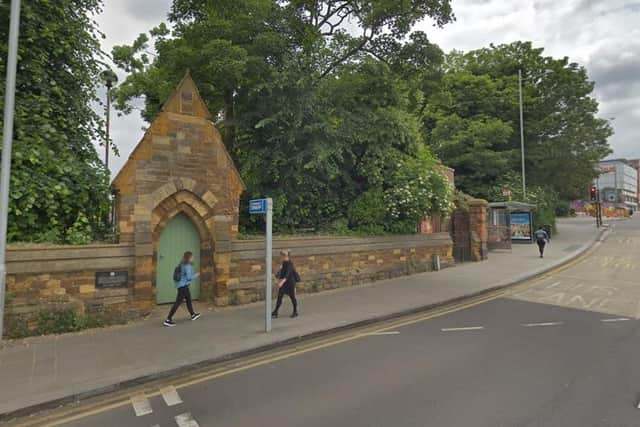Here's a brief but fascinating history of the 1,000 year history of Northampton Castle
and live on Freeview channel 276
Here’s a brief but fascinating history of the 1,000 year history of Northampton Castle.
Thousands stroll past the remnants of Northampton Castle every day, nestled near the railway station every week. But what's the story behind this ancient site?
Advertisement
Hide AdAdvertisement
Hide AdA glimpse into the castle's past has emerged from recent planning papers proposing a heritage park on Chalk Lane car park.


According to these documents, "all that remains of Northampton Castle are a handful of weathered stones, remnants of the former fortress," and that iconic doorway known as the Postern Gate.
"The origins of the Castle can be traced back to approximately 1084 when it is believed to have been constructed by Simon de Senlis I. However, there are indications of Saxon or Danish fortifications existing on this site since the 5th Century," say the planning papers.
By 1130, the Castle had come under the control of King Henry I, maintaining its status as a Royal castle thereafter, notes the historical records, according to the documents.
Advertisement
Hide AdAdvertisement
Hide Ad"In 1164, Thomas Becket, who would later be canonized as a saint, was summoned to a Grand Council of Barons at the castle in an attempt to subject him to trial. Defying their authority, Becket fled to France," recounts the papers.
The reign of King John (1199-1216) saw the Castle in frequent use, with the King staying there on thirty occasions. "In 1205, King John relocated the treasury to the Castle, and it served as the backdrop for numerous parliamentary gatherings, the last of which occurred in 1381," according to historical documentation.
However, "as Northampton’s importance grew and reached its peak, the Castle began to decline," remarks the papers, echoing the observations made by Norden in 1593.
During the English Civil War, which started in 1642, Northampton aligned with the Parliamentary forces, prompting refurbishments of the Castle and town walls.
Advertisement
Hide AdAdvertisement
Hide AdThe castle, together with the town walls, was partially destroyed in 1662 on the orders of Charles II for the support given by Northampton to the Roundheads, whose leader was Oliver Cromwell, during the Civil War.
However, after the Restoration, Charles II ordered the dismantling of both, leaving only what was necessary for judicial purposes, according to the documents.
"His Majesty is content that so much of it should remain as is necessary for the shelter of the Justices in the Bench," quotes the planning papers, citing Charles II's instructions.
The site changed hands multiple times over the years, eventually falling into the possession of the London & North West Railway Co., which levelled it to make room for a railway station.
Advertisement
Hide AdAdvertisement
Hide AdThe castle was almost completely destroyed by the railway in 1879. Only the postern gate survives, although not in its original position, situated between the station entrance and St. Andrew's Road.
"While the Castle’s physical presence has vanished, it lives on in literature, particularly through Shakespeare’s depiction of Northampton Castle in the fourth act of 'King John,'" concludes the historical account.
In recent years, plans have been submitted to to build a hotel, hundreds of flats, a new multi-storey car park and a heritage park on land near the station.
